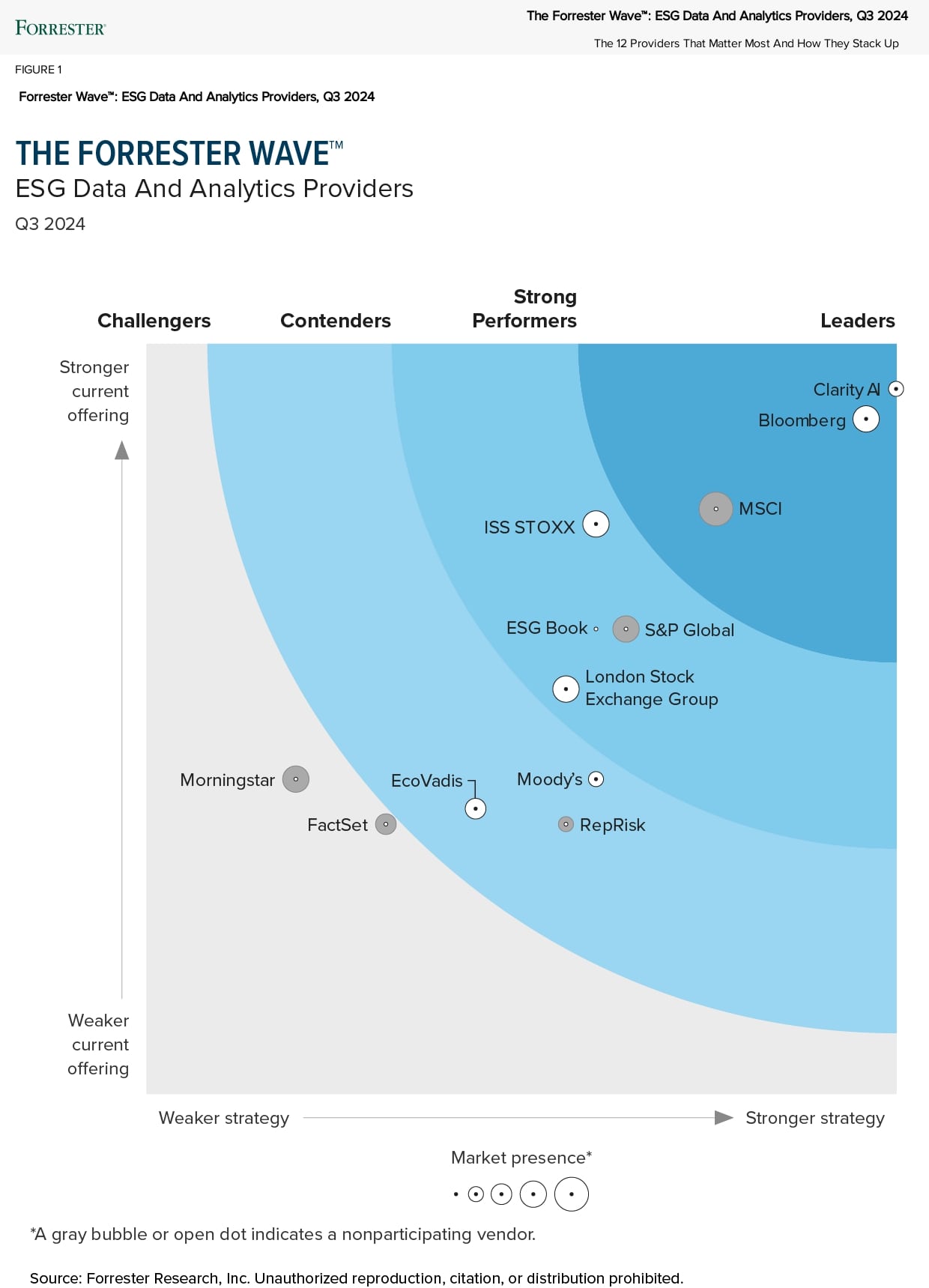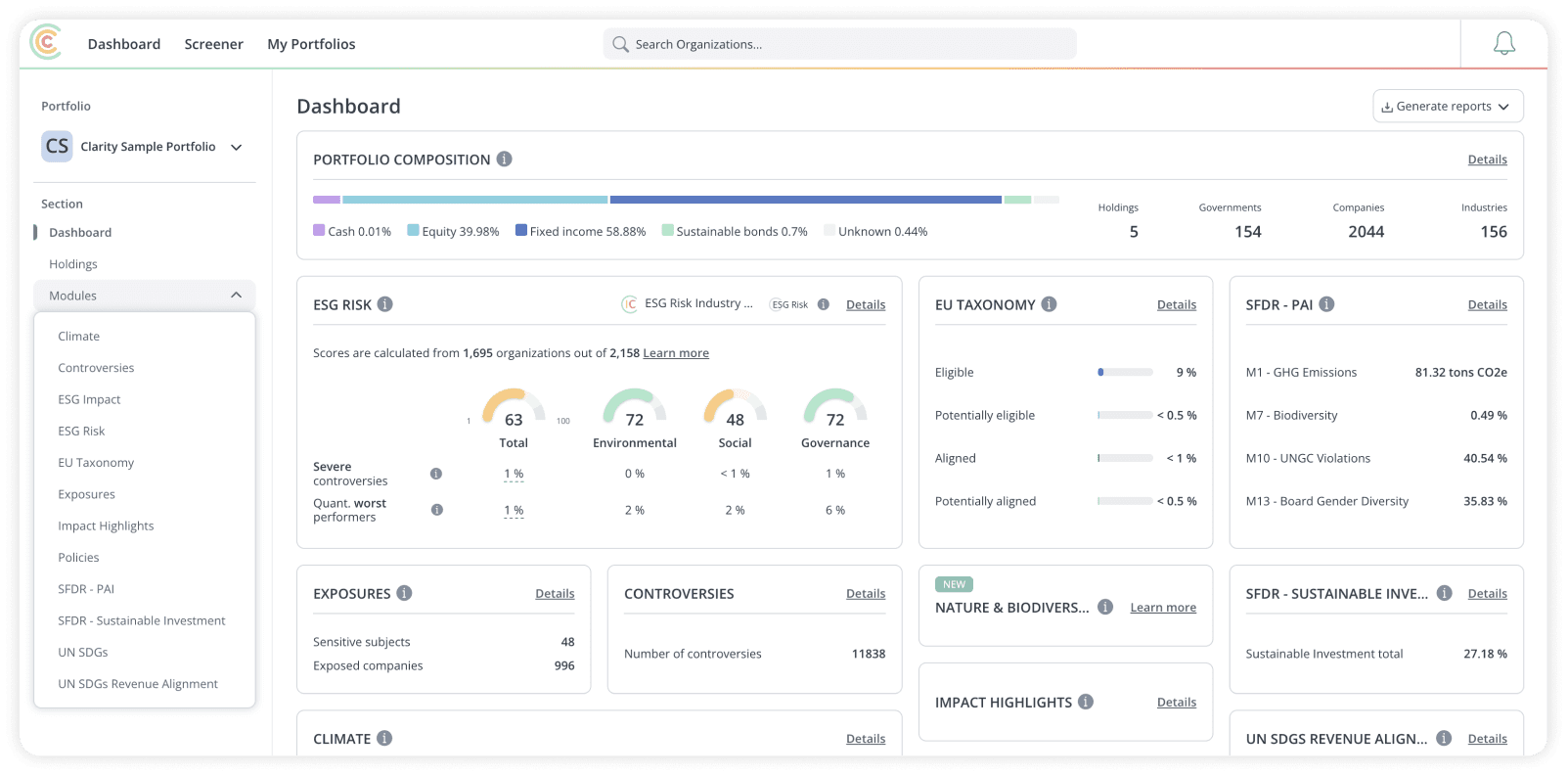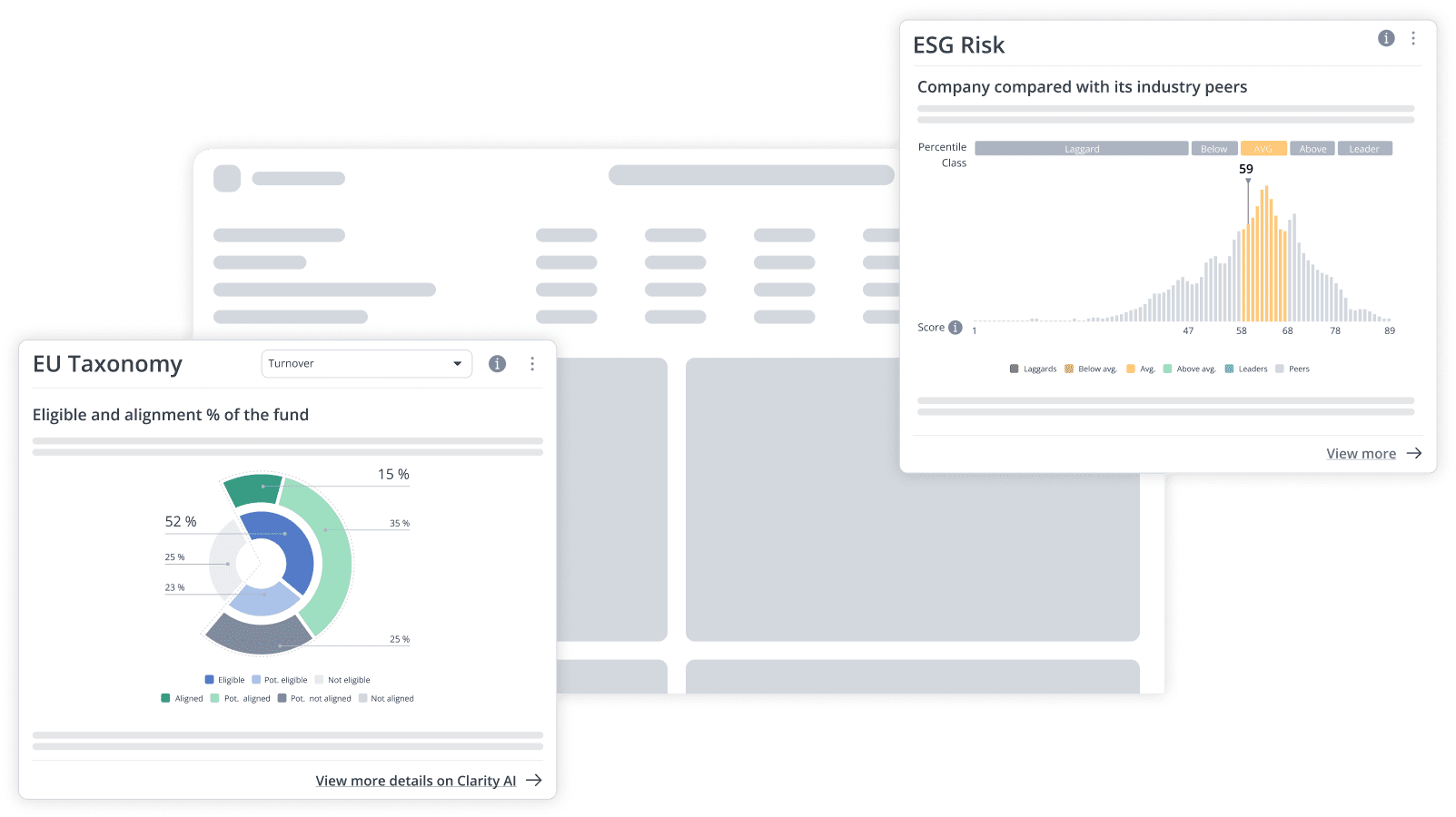Key Takeaways
- Geolocation data alone is insufficient for financial institutions to assess complex nature-related risks.
- The TNFD framework helps institutions identify and manage environmental dependencies and impacts.
- Integrating nature-related risks into decisions ensures long-term financial and environmental sustainability.
At first glance, the rolling fields of soybeans that cover Brazil’s heartland seem like an agricultural success story. However, the reality reveals significant and complex nature-related risks. Agribusiness giants have rapidly expanded into fragile ecosystems to support the growing global need for meat production, clearing thousands of acres in the Amazon and Cerrado, leading to biodiversity loss and ecosystem degradation.1
But it’s not just expansion causing devastation—the scale of soy production has deepened nature-related risks with both environmental and economic impacts. Between 1985 and 2012, deforestation caused an average 12% drop in soybean productivity, with some regions seeing reductions of over 20%.2 Such losses highlight a growing challenge for investors and financial institutions trying to assess their nature-related risks accurately.
Many have leveraged geolocation data, specifically using latitude and longitude coordinates of the production facilities, to evaluate their nature-related risks and impacts. But this approach only scratches the surface. Nature-related risks are inherently local. Each ecosystem’s unique location and characteristics shape how operations impact biodiversity and resource availability.
To fully understand nature-related risks, financial institutions must integrate production metrics—such as the quantity of goods produced, or energy generated at specific sites—with geolocation data.
In this article, we explore how combining this data provides a deeper understanding of nature-related risks, helps avoid costly misjudgments, uncovers hidden dependencies on natural resources, and identifies potential biodiversity impacts before they disrupt operations.
From Voluntary to Mandatory Frameworks: A Growing Focus on Production Data
As sustainability frameworks evolve, production data is becoming central to how companies and financial institutions assess environmental risks. Beyond simply knowing where operations take place, these frameworks increasingly focus on what is produced and how much, as this provides a clearer picture of nature-related dependencies and impacts.
Guidelines such as the LEAP approach (Locate, Evaluate, Assess, Prepare) from the Taskforce on Nature-related Financial Disclosures (TNFD) stress the necessity of going beyond simply locating where companies interact with nature.
Locate
Interactions with nature
Evaluate
Dependencies on natural capital
Assess
Nature-related risks & opportunities
Prepare
Respond
While geolocation data is crucial for the “Locate” component, LEAP advocates for a deeper evaluation of a companies’ dependencies on natural resources—such as water, minerals, and biological ecosystems—and the risks associated with their depletion or degradation. To understand the scale and significance of these dependencies, it is essential to integrate production data for a comprehensive risk assessment.
In addition to voluntary frameworks, the Corporate Sustainability Reporting Directive (CSRD) has introduced mandatory requirements for financial institutions. These institutions must now disclose their material impacts, risks, and opportunities across areas such as biodiversity and ecosystems. This requires a comprehensive analysis of activities to identify potential negative impacts. Accurate assessments require asset-level data, including detailed production metrics, to evaluate the downstream effects of operations on both communities and ecosystems.
The Limitations of Geolocation Data in Assessing Nature-Related Risks
Although geolocation data provides critical insights, additional information is necessary to accurately assess risks and set measurable goals. For instance, knowing that a company operates in areas prone to water scarcity only provides part of the picture. The more critical question is: how much production takes place at these water-stressed sites?
Evaluating production volumes helps reveal a company’s true dependency on such limited resources. Neglecting this deeper layer of analysis can lead to misguided investment decisions and heightened exposure to nature and biodiversity risks. This extends far beyond the agribusiness example highlighted in the introduction. Many industries are subject to unique nature-related risks.
To illustrate this, we used our Geospatial Asset Assessment Solution to analyze the production facilities of the top 10 electricity generation companies concerning their exposure to nature-related risks.3 The findings show that company rankings of risk exposure shift significantly when production data is included alongside geolocation insights (see Figure 1).
The analysis indicates that company rankings can change significantly when incorporating production data alongside geolocation insights. On average, rankings shifted by two positions once production data was included. For instance, an electric utility company originally ranked #1 based solely on geolocation data, with 19% of its power stations in risk areas. However, when production data was factored in, revealing that 53% of its total electricity output came from these vulnerable locations, the company’s ranking dropped to #4.
Figure 1. Change in Company Rankings of Nature-Related Risk Exposure When Production Level Data of the Asset Is Incorporated in the Analysis


Note: This figure shows changes in company rankings for the top 10 companies by revenue in the Electric Utilities sector based on two methods: the first calculates a simple average of all assets; the second uses a weighted average where each asset’s influence is determined by its total production output. A ranking of 1 in the left column indicates the best-performing company, while 10 indicates the worst. Original colors are preserved in the right column to highlight differences in rankings.
Similar patterns emerged across other sectors, such as coal and oil and gas, where focusing only on the number of facilities missed key risks tied to high production in vulnerable areas. This approach is particularly relevant for assessing exposure to sensitive locations and biodiversity-rich regions. Production metrics provide a clearer view of a company’s exposure by quantifying activities within ecosystems that could face regulatory penalties or negative publicity.
For example, a mining company might initially appear low-risk due to the limited number of sites in sensitive areas based on geolocation data alone. But if a substantial portion of its extraction occurs in biodiversity hotspots, the company faces greater risks, even with fewer operational sites in those areas. This additional insight could change the company’s risk ranking significantly, emphasizing the importance of understanding not only where you operate but also the extent of your activities in these areas.
By combining geolocation and production data, financial institutions can provide a more comprehensive risk evaluation. This approach aligns with voluntary frameworks like TNFD, helping companies anticipate and mitigate biodiversity risks while avoiding costly penalties or reputation damage.
Clarity AI’s Approach: Beyond Geolocation Data for Nature-Related Risks
Clarity AI’s advanced approach allows financial institutions to get a clearer understanding of the nature-related risks that companies face. By incorporating production data from physical assets (e.g., electricity generated for utilities, produced oil for energy companies), we determine the percentage of a company’s revenue at risk based on the geolocation and production scale of its primary activities. While most other data providers rely on physical asset aggregation without considering their size, Clarity AI utilizes production data to yield the most accurate assessments. Our aggregated results simplify risk evaluation, providing the precision financial institutions need to protect against nature-related risks.
- WWF. “Expansion of Soybean Farms Has Led to Vast Areas of Deforestation and Destruction.” WWF UK. Accessed October 16, 2024. https://www.wwf.org.uk/myfootprint/challenges/expansion-soy-bean-farms-has-led-vast-areas-deforestation-and-destruction.
- WWF Brasil. “Deforestation Increases the Costs of Climate Change for Agribusiness.” WWF Brasil. Accessed October 16, 2024. https://www.wwf.org.br/?84321/Deforestation-increases-the-costs-of-climate-change-for-agribusiness (…).
- Our primary data sources for assets are Climate TRACE and the World Resources Institute. We also consider the percentage of ownership of each physical asset owned by each company. We use ENCORE’s materiality assessment to determine the relevant nature risks associated with each production activity.







